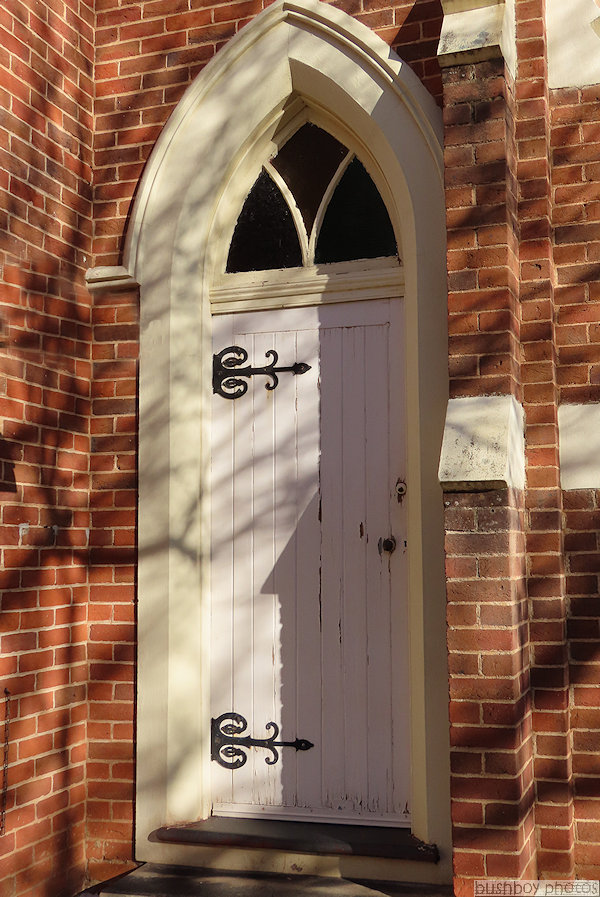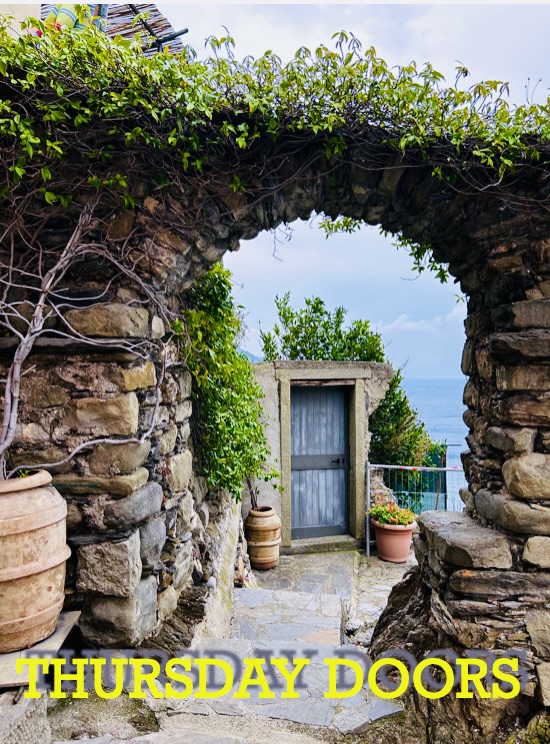Dans Thursday Doors
A recent road trip over the mountains west of my place and then head north. Most of the towns I was allowed to have a drive around and photo spot. My driver was good at doing spotting using his whatsit ion his car to find something else that could be OK or something on the road out.
One place he had never been to, a small town, Warialda, was a drive about town.
Agriculture is the industry that sustains Warialda and wider area to this day. The rich alluvial Gwydir River flats to the west and the black soil plains to the northern region produce some of the countries finest grains. Sheep, wool and cattle production add high quality and significant value to the agricultural industry.
REF: https://www.gwydir.nsw.gov.au/Visitors/History-of-our-Towns-and-Villages
First stop St Patrick’s Church. So far my St Patrick’s church count is that there is one in every town I have visited
*St Patrick’s Roman Catholic church was built in 1904

The side door with the standard door hinges of the day

Warialda Court House
*Located on the corner of Hope and Stephen Streets, the red-brick courthouse dates from 1883 and was built by S. Senior at a cost of £2,650. Look carefully and you will notice fine attention to detail on the veranda pillars and the bricks around the three front windows.



The courthouse looks like some of the old country restaurants we have here with the porch for people to line up and wait to be called inside for their dinner.
Isn’t there something so lovely about old churches that you just have to stop for a photo?
LikeLiked by 1 person
So happy you enjoyed a glimpse at Warialda Lois. I enjoy photographing old churches too
LikeLiked by 1 person
How funny that if you’re an Australian Catholic church you’re more or less obliged to be called St. Patrick! Nice doors.
LikeLiked by 2 people
There’s also a lot of St Mary’s as well
LikeLiked by 1 person
Good ones, the veranda is unique
LikeLiked by 1 person
Thanks Alice. It is a great design and good for keeping cool
LikeLiked by 1 person
Excellent!
LikeLiked by 1 person
Thank you Sue
LikeLiked by 1 person
Nice trio
LikeLiked by 1 person
Thanks Sheree
LikeLiked by 1 person
That’s a nice looking place, Brian 🤗❤️
LikeLiked by 1 person
It was a lovely little town. We had to get to our accommodation a few hours away so it was a quick stop. Only a few hours from my place so I might go back in Spring 🥰
LikeLiked by 1 person
We’ve got quite a few St Patrick’s Churchs around here. I love the church, and the hinges, and I love the courthouse!
LikeLiked by 2 people
Thanks Dan. Good old St Patrick got around 😂
LikeLike
That’s a sturdy looking church. Also like the courthouse, especially with the palm tree shadow!
LikeLiked by 1 person
At first I was annoyed at the palm trees shadows as it seemed to dominate the whole landscape but “cut down to size” it does look good with less palm shadows. No shortage of rock for the church for sure
LikeLiked by 1 person
That sounds like such a great game: go find the St. Patrick’s church. I’m sure there are a gazillion in the U.S.
LikeLiked by 1 person
I think it would be an easy game here as well
LikeLiked by 1 person
The setting of that door is identical to the old Unitarian church (now a museum) here. Ours dates to 1869, yours is a bit later. Most of your old buildings are the same period as ours and many are surprisingly similar. I wonder sometimes if the architects moved from country to country and brought their styles with them. It’s possible. Work, after all, is work.
LikeLiked by 1 person
I think so as well, building from standard designs worldwide
LikeLike